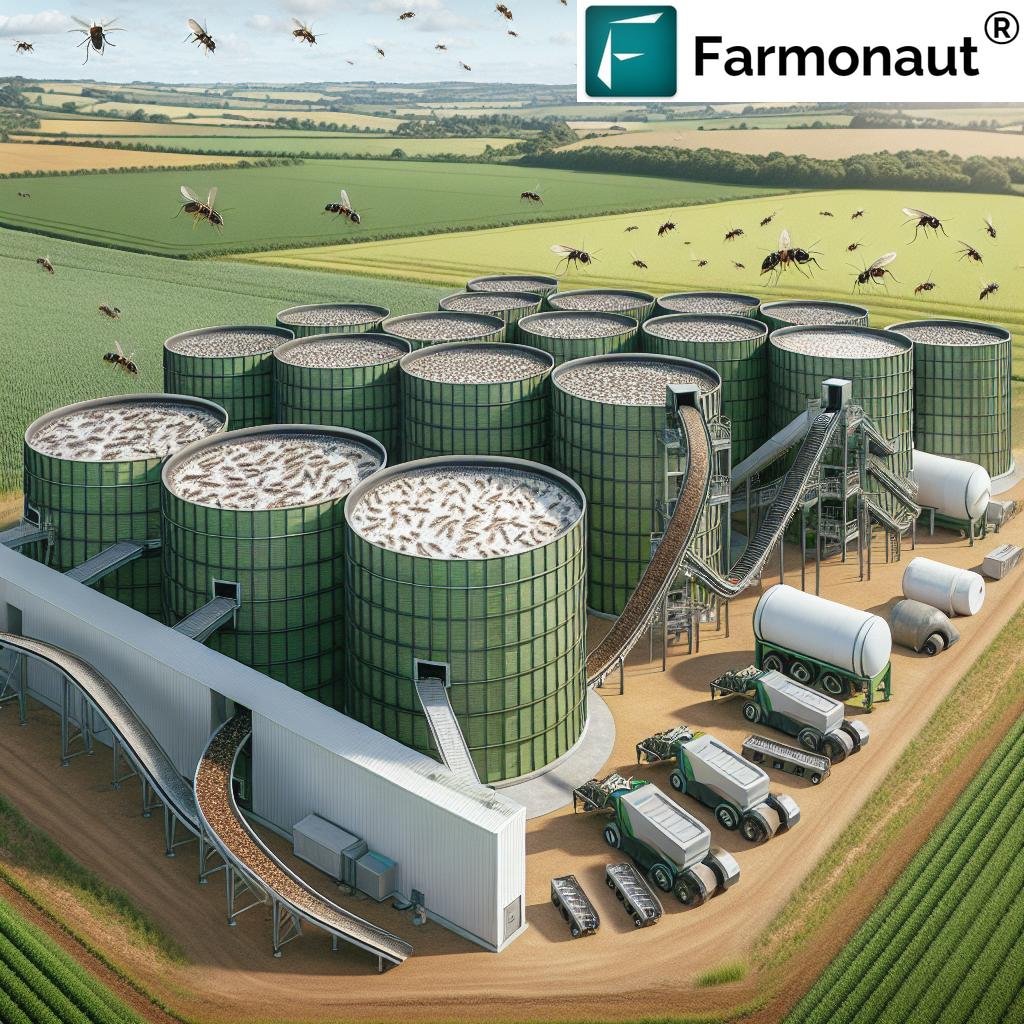UK: A Global Leader in InSAR-Based Ground Monitoring
Meta Description: Why the UK is a Global Leader in InSAR-Based Ground Monitoring: Discover how advanced radar, satellite, and remote sensing infrastructure make Britain stand out in infrastructure risk management and resilience.
“The UK monitors over 10,000 infrastructure sites annually using advanced InSAR radar technology.”
Introduction to InSAR-Based Ground Monitoring
Why the UK is a Global Leader in InSAR-Based Ground Monitoring is a question of increasing significance as the need for resilient, sustainable, and innovative infrastructure systems becomes more acute in the 21st century. Across the United Kingdom, we see an exemplary model for harnessing Interferometric Synthetic Aperture Radar (InSAR), a revolutionary remote sensing technology that enables highly precise measurement of surface deformations—even down to millimeter scales—across large areas and extended periods.
Among nations adopting this advanced satellite technique, the UK stands particularly tall for its comprehensive blend of scientific expertise, innovative applications, proactive government support, and global leadership in infrastructure monitoring. We examine how InSAR has not only revolutionized ground monitoring but how the UK’s mastery of the technology—reflected in its resilient rail, transport networks, urban environments, and energy systems—offers a blueprint for nations seeking to foster safer and sustainable futures as climate and urbanization risks intensify toward 2025 and beyond.
Why the UK is a Global Leader in InSAR-Based Ground Monitoring
The United Kingdom’s standing as a global leader in InSAR-based ground monitoring is defined not just by deployment but also consistent innovation, robust infrastructure development, and policy frameworks enabling the strategic use of radar and satellite technologies.
- Early and proactive investment in scientific research, specifically geospatial and space technologies over decades
- Access to a rich constellation of advanced satellites, including European programs such as Copernicus Sentinel, empowering large-scale, high-frequency data acquisition
- Strong national policies emphasizing resilient infrastructure, timely risk detection, and early warning systems for hazards like subsidence, landslides, and soil compaction
- Integration of InSAR into public and private networks for critical infrastructure – notably transport, bridges, rail, and urban developments
- A history of collaborative research and early adoption of algorithm-driven interpretation techniques in academic hubs such as University of Sheffield, University College London, and the Satellite Applications Catapult.
Above all, the UK’s mastery of InSAR monitoring reflects a savvy and forward-thinking combination of public and private sector involvement, fostering innovation in both policy and practice.
Historical and Technological Foundations of UK’s InSAR Leadership
The historical roots of the UK’s prominence in InSAR-based ground monitoring stems from the intersection of government foresight, persistent scientific research, and private sector drive. Over several decades, British institutions have played pivotal roles in not just adopting but shaping interferometric synthetic aperture radar as a functional technique for national infrastructure monitoring.
- Long-Standing Investment in Space Science: The UK government and its agency, the UK Space Agency, have consistently allocated funding to universities and companies for the advancement of geospatial technologies. This investment is visible through grant awards, national strategy documents, and participation in international satellite missions.
- Academic and Research Hubs: Academic centers such as the University of Sheffield, University College London, and the Satellite Applications Catapult in Harwell have pioneered algorithms, data processing, and interpretation techniques that transform raw radar signals into actionable intelligence for critical infrastructure monitoring.
- Private Sector Innovation: The UK’s private sector excels at taking academic advances to commercial maturity. Innovative companies specialize in InSAR data analytics, providing services to engineering firms, utilities, local councils, and government bodies monitoring everything from bridges to railway embankments.
What Makes Interferometric Synthetic Aperture Radar (InSAR) Revolutionary?
InSAR technology relies on pairing high-resolution radar images from satellites orbiting Earth at different periods, using phase differences to reveal subtle vertical movements of the ground. This precision imaging—capable of detecting deformations down to millimetre-level shifts—has revolutionized monitoring for critical infrastructure and urban areas.
- Non-Intrusive & Scalable: Unlike older ground-based measurement, InSAR provides a large (thousands of km²) coverage area in every data acquisition cycle, making it ideal for urban and rural monitoring alike.
- Timely & Cost-Effective: The technique is repeatable over short intervals, preventing costly failures by facilitating early detection of risks for maintenance teams.
- Enhanced Data Usability: Recent improvements in algorithm design and AI-based processing make interpreting InSAR data more user-friendly and accessible to infrastructure managers and policymakers.
Satellite Constellations & Data Infrastructure
The UK’s effectiveness in applying InSAR for ground and infrastructure monitoring is inseparable from its access to a robust network of advanced satellites and a powerful data infrastructure.
- European Partners: The UK leverages the Copernicus programme and Sentinel satellites operated by the European Space Agency (ESA), ensuring frequent, high-resolution radar imagery across the country.
- Commercial Providers: InSAR-based services also tap into imagery from private-sector constellation satellites for even higher spatial and temporal resolution.
- Integrated Ecosystem: The UK integrates these data streams with national digital platforms, automated analysis systems, and cloud storage for broad, swift, and reliable availability.
The result: National capacity for near real-time monitoring—vital for maintaining resilient infrastructure systems in the face of soil compaction, landslides, subsidence, and even asset management in remote rural areas.
How InSAR Data Enhances Infrastructure Maintenance and Risk Mitigation
By combining advanced radar data from multiple satellite sources, the UK’s infrastructure managers can:
- Enable Early Risk Detection: Identify emerging movements (e.g., ground subsidence or landslides) that threaten critical structures before failure or costly damage.
- Enhance Safety: Direct preventative maintenance to high-risk areas, drastically improving public safety and reducing emergency interventions and downtime.
- Reduce Costs: Early intervention using satellite-based analytics dramatically reduces the expense of infrastructure repairs and associated service interruptions.
- Enable Large-Scale Coverage: National scale programs monitor bridges, tunnels, pipelines, urban developments, energy transmission corridors, and more.
Applications: Infrastructure Monitoring Across the UK
Let’s examine how InSAR technology is deployed across a range of critical infrastructure domains in the UK, using advanced radar for ground monitoring on an unprecedented scale:
-
Rail Networks: Analysis of surface deformations under rail routes enables identification of risky ground movements due to soil compaction or subsidence, directing regular maintenance to prevent disruption and damage.
Fun Fact: Each year, over 20,000 km of UK rail infrastructure benefit from InSAR-based monitoring for early hazard detection. - Urban Infrastructure: Subsidence and subtle shifts due to historic mining, groundwater extraction, or soil shrinkage are detected in urban areas – facilitating safer high-rise development, roadworks, and pipeline management.
- Energy and Transport Corridors: Energy infrastructure, such as transmission towers, pipelines, and offshore installations, are regularly mapped for unwanted motion or geological instability, ensuring uninterrupted national operations.
- Water Management Systems: Monitoring for landslides, embankment weaknesses, and soil saturation helps manage risk from river or canal flooding – a growing threat as climate change drives wetter winters.
“InSAR technology in the UK detects ground movements as small as 1 millimeter per year.”
Enabling Proactive, Resilient Infrastructure Management Across the Country
What sets the UK apart is not just the scale of deployment, but the integration of InSAR-based ground monitoring into organizational processes. By 2025, these advancements contribute directly to:
- Sustainable Urban Development: Local authorities rely on early warnings to guide sustainable rehabilitation of vulnerable urban areas.
- Safer National Networks: Transport and utility networks benefit from enhanced visibility into hidden ground instabilities.
- Evidence-Based Policy: Government entities use actionable InSAR data to inform regulatory policies and infrastructure upgrades for long-term climate resilience.
Learn more about how real-time satellite data fuels efficient fleet oversight on our Fleet Management platform.
Government Support and Regulatory Framework
A decisive reason Why the UK is a Global Leader in InSAR-Based Ground Monitoring is its proactive government approach to integrating advanced remotely sensed data for infrastructure and public safety.
-
Policy Documents:
Regular high-level strategic studies, such as the National Infrastructure Commission’s reports, prioritize advanced monitoring for national assets. -
Regulatory Mandates:
Infrastructure projects, particularly those deemed critical (bridges, rail corridors, urban regeneration schemes), increasingly require ground monitoring as part of safety and compliance. -
Public Investment:
Direct funding has enhanced national ecosystem capacity through digital twins, cloud computing, and expanded satellite data acquisition, enabling not just monitoring but predictive scenario planning and rapid response.
This unique regulatory environment fosters innovation and integrates InSAR into all facets of infrastructure management across the country.
Innovation and Future Advancements in UK InSAR Monitoring
As 2025 approaches, UK leadership in InSAR-based ground monitoring continues to evolve, empowered by innovation in AI, cloud services, and high-resolution satellite systems.
-
AI-Powered Anomaly Detection:
Smart, cloud-based algorithms automate data interpretation, flagging risky patterns across thousands of assets in real-time for early detection of hazards. -
Higher Frequency and Resolution:
Next-generation satellites provide near-constant imaging of key areas, capturing quick-onset ground instabilities during storms or maintenance periods. -
Seamless Integration with Digital Twins:
InSAR data is now core to digital twin platforms for bridges, pipelines, and rail systems, enabling simulated stress testing, scenario planning, and life-cycle cost optimization.
Harnessing infrastructure data at scale is now possible due to these technological advances, making it a mainstay of UK’s critical infrastructure defense and resilience strategy.
Satellite Technology for Urban and Rural Infrastructure
Ongoing innovation means the UK can enable cost-effective, regular monitoring of everything from sprawling urban developments to remote countryside areas. These insights are instrumental in guiding maintenance investment, informing sustainable construction standards, and supporting climate adaptation strategies.
Key InSAR-Based Ground Monitoring Initiatives in the UK
| Project Name | Technology Used | Coverage Area (km²) | Main Objective | Key Outcomes | Year Initiated |
|---|---|---|---|---|---|
| National Rail InSAR Monitoring | Interferometric Synthetic Aperture Radar (Sentinel-1, Commercial) | 20,000+ | Track stability & embankment movement detection | Over 3,500 early risk detections/year; all critical rail corridors covered | 2018 |
| Urban Subsidence Surveillance (Greater London) | InSAR (Sentinel-1, AI Data Processing) | 1,570 | Detect soil shrinkage, mining-induced subsidence | 100+ urban hazard alerts annually; supports planning & maintenance | 2017 |
| National Bridge Integrity Programme | InSAR, Digital Twin Integration | 3,900 | Monitor bridge settlement & stability across country | 1,200+ interventions based on satellite alerts; reduced downtime | 2020 |
| National Energy Corridor Survey | InSAR (Copernicus, Commercial) | 25,000 | Track movement affecting transmission lines & pipelines | Multiple major repairs averted with early InSAR warnings | 2015 |
| Rural Landslide and Compaction Mapping | InSAR w/ Ground Sensors | 5,200 | Map soil compaction and rural landslide risks | Support for sustainable land management; water agencies benefit | 2019 |
All coverage and outcome values are estimates and demonstrate the UK’s large-scale approach to InSAR-based infrastructure resilience.
Farmonaut: Satellite Technology Solutions for the Next Era
As a pioneering satellite technology company, we at Farmonaut offer a full suite of advanced, satellite-based solutions that echo the UK’s global leadership in InSAR-based ground monitoring. Our mission is to democratize access to satellite-driven insights for businesses, users, and governments worldwide, supporting everything from infrastructure monitoring to agriculture, mining, defence, and environmental management.
- Satellite-Based Monitoring: We combine multispectral satellite imagery, AI-driven analytics, and InSAR techniques to monitor vegetation health, soil conditions, urban or rural ground integrity, and infrastructure stability. Rapid, remote monitoring is possible for any size operation, from field to city.
- AI for Advisory and Automation: Our Jeevn AI advisory system analyzes satellite data for real-time alerts and context-based advisory, enabling users to anticipate risks and maximize operational efficiency.
- Blockchain Traceability: We enable seamless product traceability via blockchain, building trust and reducing risk in agricultural, mining, and supply chain networks.
Learn more about secure supply chains and Traceability. - Intelligent Resource Management: Our platform offers logistics tracking, fleet oversight, and remote asset health management for infrastructure and mining sites via web, Android, or iOS Apps and comprehensive APIs.
Learn more about Farmonaut’s developer APIs here and access developer docs here. - Environmental Impact Monitoring: Real-time carbon footprint tracking helps meet regulatory demands and steer sustainability in agriculture, mining, and infrastructure sectors.
See our Carbon Footprinting product page for details. - Financial Verifications: We support banks and insurers with satellite-based verification tools for loans, insurance, and claims assessment in infrastructure and mining.
Explore our crop loan and insurance insights.
With scalable subscription models and modular service tiers, we ensure large-scale and small-scale users get affordable, impactful satellite solutions—aligned with the best practices seen in the UK’s approach to ground monitoring and infrastructure protection.
For operations at national or enterprise scale, visit our Large Scale Farm Management platform to see how centralized dashboards and satellite-driven action plans can boost regional resilience and efficiency.
Farmonaut Subscription Plans
Choose the plan that best fits your infrastructure or ground monitoring requirements. Our solutions are tailored for individuals, businesses, and governments—enabling broad access to satellite-powered insights.
Frequently Asked Questions
Interferometric Synthetic Aperture Radar (InSAR) is a remote sensing technique using radar satellites to detect minute surface deformations over large areas. It is crucial for infrastructure monitoring in the UK because it enables detection of subtle ground changes, like subsidence or soil compaction, which could threaten roads, bridges, pipelines, or urban structures. Early detection aids maintenance and risk reduction, preventing costly damage.
How does InSAR compare to traditional ground monitoring methods?
Unlike point-based methods (e.g., leveling, GPS stations), InSAR provides dense, area-wide measurement with spatial resolution down to meters and sensitivity at millimeter scales. It is scalable, cost-effective, and allows frequent re-surveys over the same area, making it ideal for the UK’s complex infrastructure systems.
What makes the UK’s approach to InSAR unique?
The UK’s leadership stems from its combination of strong research, investment in scientific institutions, access to rich satellite constellations (Copernicus Sentinel, commercial satellites), and proactive government policy. The UK’s integration of radar data in national-scale risk management platforms sets it apart among nations.
How does InSAR support climate resilience in UK infrastructure?
InSAR enables monitoring of surface deformations caused by more frequent extreme weather events (e.g., heavy rainfall, drought-induced soil shrinkage). By tracking these changes, infrastructure managers can optimize maintenance, preventing failures due to climate-driven ground instability.
What is Farmonaut’s value proposition in ground monitoring and infrastructure?
At Farmonaut, we combine satellite-based monitoring, AI analysis, and blockchain to deliver actionable insights for ground, infrastructure, agriculture, and environmental management. Our platform provides real-time data, advisory tools, and scalable solutions—lowering costs while fostering sustainability and risk reduction across industries.
Can Farmonaut’s technology help businesses outside the UK?
Yes! While this article focuses on the UK’s leadership as a model, our solutions serve users worldwide. Whether you manage small agricultural plots, large mining operations, or complex national infrastructure, our satellite-driven tools enable affordable, actionable monitoring wherever ground risk and resilience matter.
How can I integrate Farmonaut monitoring into my existing digital systems?
Integration is straightforward with our robust APIs, allowing seamless fusion of satellite and AI data into mobile, web, or enterprise platforms. See our developer docs here.
Conclusion: Why the UK is a Global Leader in InSAR-Based Ground Monitoring
The United Kingdom stands unmatched among nations in adopting and applying InSAR-based ground monitoring—driven by a unique blend of scientific expertise, advanced radar and satellite technology, expansive data infrastructure, proactive government policy, and a focus on resilient, sustainable infrastructure management.
- The UK’s approach reflects decades of investment, research, and collaboration in space and geospatial technologies—from academic hubs (Sheffield, London, Catapult) to national and commercial satellite ecosystems.
- Modern policy, comprehensive coverage, and rigorous early risk detection models protect critical infrastructure, urban developments, and rural assets—enabling safe, proactive, and cost-effective maintenance.
- Looking ahead to 2025 and beyond, the UK is set to enhance its leadership thanks to AI, digital twins, and next-generation satellite launches.
- For organizations globally, the UK’s success offers a tested blueprint to foster safer, more resilient societies in a climate-unstable world.
- At Farmonaut, we’re committed to enabling the same level of innovation and resilience for our users—through accessible, AI- and satellite-powered solutions that put reliable insights into every hand.
By merging advanced remote sensing technologies with real-world infrastructure applications, the UK stands as a clear global leader in the InSAR revolution. Its mastery of ground monitoring offers inspiration for nations, agencies, and companies aiming to foster robust, sustainable systems in the face of tomorrow’s climate and urban challenges.












